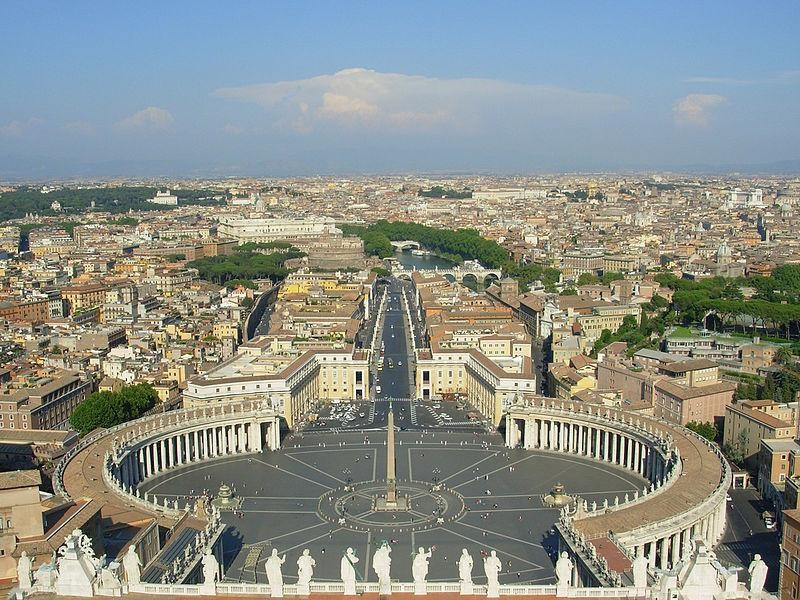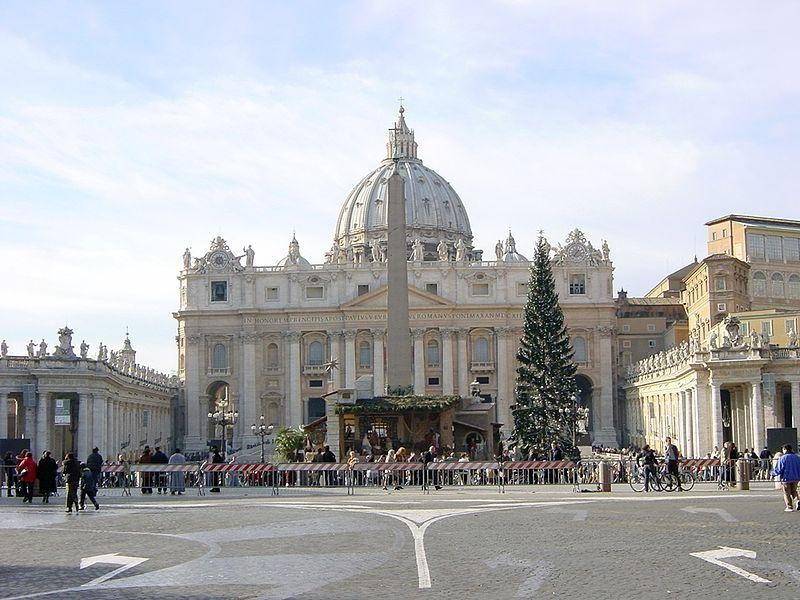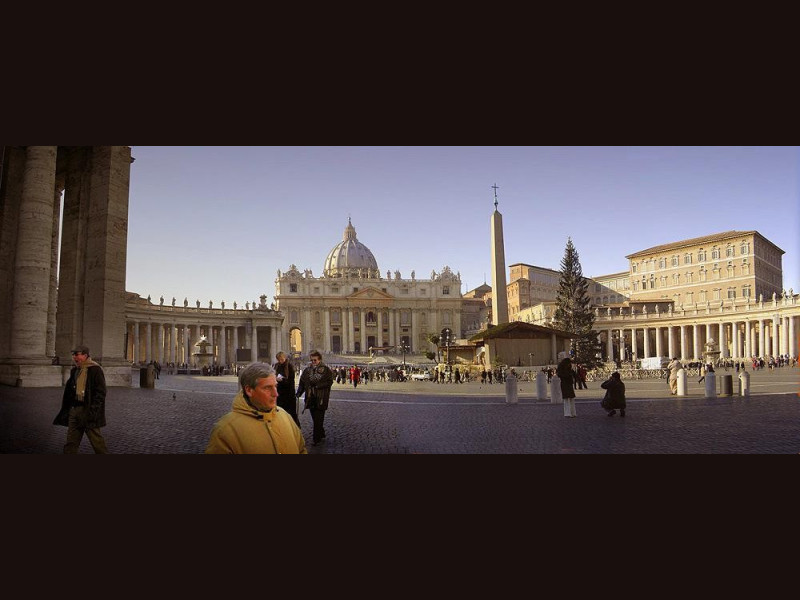Piazza San Pietro
St. Peter's Square is the square in front of the St. Peter's Basilica. In the margins of the historical center of Rome, the Square is part of the Vatican City and is accessible from Via della Conciliazione. Remarkable example of Baroque architecture and urban planning, is the meeting point for thousands of Catholic faithful from around the world. The space of the Square is divided into two parts: the first, trapezoidal reverse corresponds to the facade with specific perspective reasons, the second, larger and oval in shape, is home to the Vatican Obelisk. The two large spaces are unified by the imposing colonnade architrave. St. Peter's Square and Basilica occupy the space that in Classical times housed the Nero's Circus, where it was placed, according to tradition, the St. Peter's tomb after his martyrdom. Pope Pius II did make a marble staircase in front of the Basilica and begin the work of a lodge for the blessings. Pope Nicholas V had planned to transform the shapeless space clay (Sancti Petri audience) in an arcaded square. At the beginning of '500 the Square was an unpaved rectangular. Straight Street is the first straight to act as bridge between the housing and the cardinals buildings. Throughout the sixteenth century the Square was not affected by the works, which related only to the Basilica. A mid-sixteenth century it decides to enlarge on both sides; in 1586 Sixtus V makes it carry the ancient Egyptian obelisk in the center. It is only from the seventeenth century that imposes the question of the Square: transform an undifferentiated space into a monumental and representative space, functional to the Basilica. The first solution (1656) by Bernini was a trapezoidal Square, quickly discarded in favor of a project with free porches of columns to form an oval, ideal "embrace" of the Church to the faithful. The triple porch meets the liturgical procession of Corpus Christi and produces an unparalleled scenic effect. The Doric was considered more suitable to the geometry of the Square. For the first time Bernini imposes the axis of the Basilica. The 162 statues of Saints, each one corresponding to a column, represent the ecclesia triumphans, the crowd of the faithful in prayer in the Square.



